
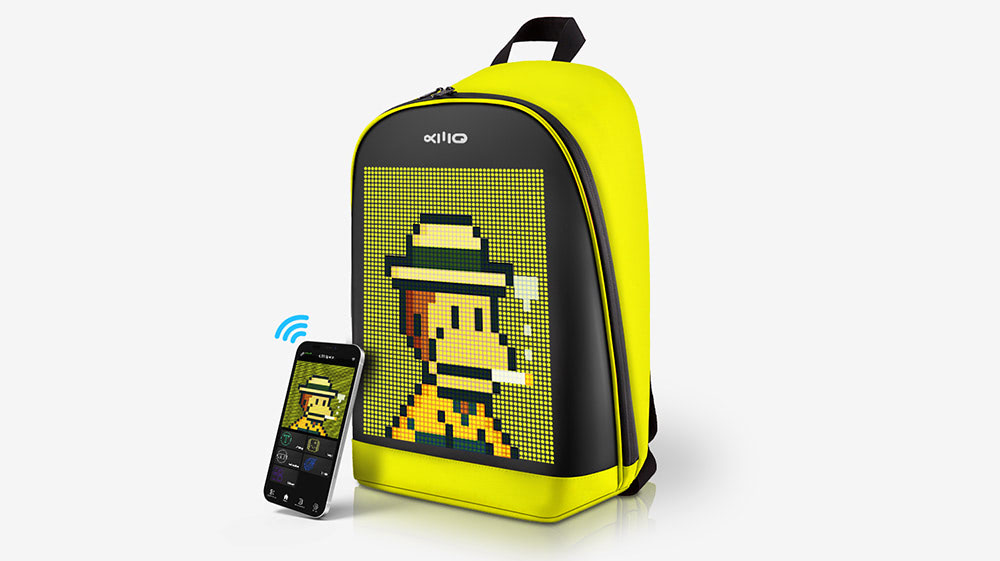
NFT Backpack with LED Display
Digital art, wearables and fashion are three domains that are increasingly converging in the cultural landscape. And in this new scenario, wearables, Web3 and NFT digital art are some of the hottest topics right now.
Fashion is a form of art that reflects our identity, culture and mood. It is also a way of communicating our values, beliefs and preferences to others. Fashion has always been influenced by technology, from the invention of the sewing machine to the development of synthetic fabrics and smart textiles. However, when it comes to digital or virtual domains, fashion is not limited by the physical constraints of material, size, shape, color or function. Fashion can be anything we imagine, and we can change it at any time.
While the internet is an established idea and term that dates back the 1990s, the metaverse is a term that describes a shared virtual space where people can interact, create, play and socialize using digital avatars and assets. In this essay, we explore how fashion, wearables and digital art are transforming the way we express ourselves, communicate and consume in the metaverse.
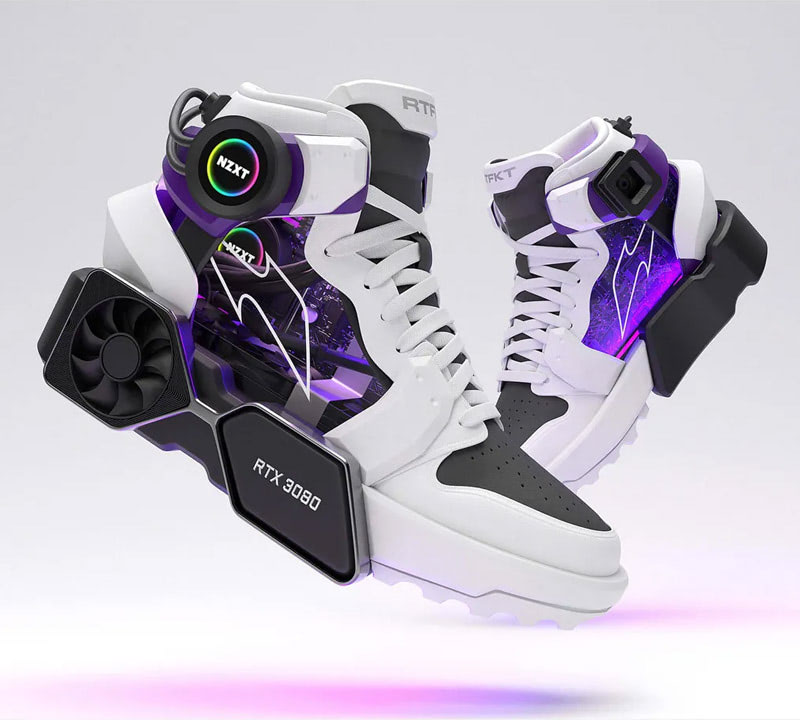 NFTs, on the other hand, are digital tokens that are linked to the blockchain and provide certain ownership rights to an asset, typically a digital one, such as a digital work of art. They also authenticate the originality of design, artworks, and physical or digital goods.
NFTs, on the other hand, are digital tokens that are linked to the blockchain and provide certain ownership rights to an asset, typically a digital one, such as a digital work of art. They also authenticate the originality of design, artworks, and physical or digital goods.With the rise of Web3, one of the emerging trends in fashion is digital fashion, which is the creation and consumption of fashion items that exist only in the digital realm. Digital fashion can be worn by our avatars in the metaverse, or displayed on our social media platforms, or projected onto our physical bodies using augmented reality (AR) devices.
Digital fashion can also be tokenized as non-fungible tokens (NFTs), which are unique and verifiable digital certificates of ownership that can be traded on blockchain platforms. NFTs can give digital fashion items scarcity, value and provenance, as well as enable new forms of creativity and collaboration.
Riding this brave new wave, many leading fashion brands are embracing the Web3 landscape and creating innovative and exclusive collections of digital wearables for the metaverse. These fashion NFTs can be bought, sold or collected as matching sets, and they can also be converted into physical goods in some cases. Some of the factors that determine the value of an NFT are its scarcity, utility, design and popularity.
Some fashion brands that are going digital with NFT wearables are:
Adidas: The footwear company launched its first NFT collection Into The Metaverse in December 2021 in partnership with Bored Ape Yacht Club and other partners. The collection allows holders to style their PFPs with gear as long as they are a Bored Ape, Mutant Ape, WAGMI United or Inhabitants NFT holder. Adidas also owns digital land in The Sandbox and has launched several Web3-related products, including virtual and physical wearables. Its latest Web3 journey, ALTS by Adidas, takes Into The Metaverse to a new chapter and allows users to go on an interactive storyline while using the PFP to represent their identity in the virtual world. Also recently, Prada announced it is releasing its first NFT in partnership with Adidas: a crowd-sourced digital artwork in a Beeple-style collage aimed at the metaverse.
Gucci: The luxury fashion house launched its first NFT, a fashion film inspired by its Aria collection, in June 2021 and sold it at auction for $25,000. The film features a digital runway show with models wearing Gucci outfits and accessories. Gucci also collaborated with Enjin, a blockchain gaming platform, to create a digital sneaker called Gucci Virtual 25, which can be worn in various metaverse games and platforms.
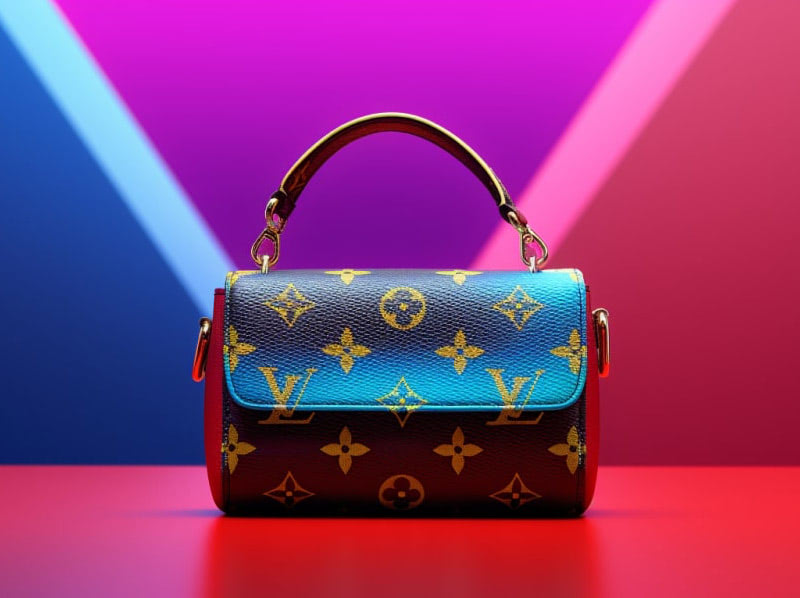 Louis Vuitton: The French fashion brand entered the metaverse with a mobile video game integrated with 30 NFTs, ten of which were created by Beeple, to celebrate its founder's 200th anniversary. The game, called Louis The Game, features a virtual character named Vivienne, who embarks on a journey across six worlds inspired by the brand's history and values. The NFTs are hidden in the game and can be collected by the players.
Louis Vuitton: The French fashion brand entered the metaverse with a mobile video game integrated with 30 NFTs, ten of which were created by Beeple, to celebrate its founder's 200th anniversary. The game, called Louis The Game, features a virtual character named Vivienne, who embarks on a journey across six worlds inspired by the brand's history and values. The NFTs are hidden in the game and can be collected by the players.We're really thinking about four use cases primarily. One is client storytelling and immersive brand experiences. It's about transparency, traceability and tracking for authenticity...
Nelly Mensah - Head of Web3 & Metaverse at LVMH
These are just some of the examples of how fashion, wearables and NFT digital art are transforming the way we express ourselves and interact with others in the metaverse.
Digital art is a form of art that uses digital technology as a medium or a tool to create or display artworks. It can include various genres, such as animation, video, photography, graphic design, illustration, painting, sculpture, installation and performance. Digital art can also be interactive, immersive, generative, collaborative and participatory. Digital art can be displayed on various platforms, such as websites, social media, mobile apps, digital screens, VR and AR devices, and the metaverse. Digital art can also be tokenized as NFTs, creating new possibilities for artists and collectors.
While traditional luxury goods need physical shops for consumers to buy them, when it comes to NFTs and digital art in general, a different fashion of shopping comes to life: the digital marketplaces.
In its essence, digital marketplaces are platforms or communities that offer a secure, organized and attractive way to browse, shop, purchase and store digital collectibles commonly known as NFTs and other types of non-physical goods. While the concept isn't new and has been around for a while within the gamers community for example, the concept is reinventing itself and getting considerable traction in the past years.
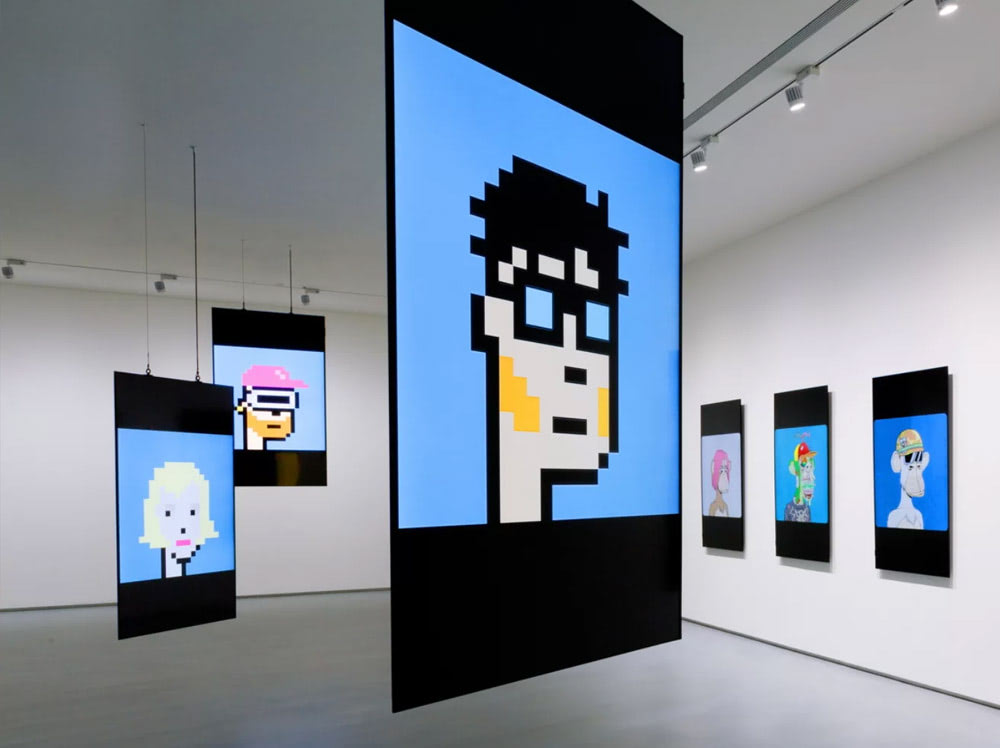 Some examples of digital art platforms are:
Some examples of digital art platforms are:• SuperRare: A platform that allows artists to create and sell digital artworks that are minted as NFTs on the Ethereum blockchain. The platform also hosts exhibitions and events in the metaverse, such as the SuperRare Museum, which is a virtual gallery that showcases the artworks of the platform's artists.
• Art Blocks: A platform that allows artists to create generative artworks that are minted as NFTs on the Ethereum blockchain. The artworks are based on algorithms that produce different variations of the same concept, depending on the input of the collector.
• Async Art: A platform that allows artists to create programmable artworks that are minted as NFTs on the Ethereum blockchain. The artworks are composed of layers that can change over time, depending on various factors, such as time, weather, price, or the choice of the collector.
But not only the traditional and household fashion houses are diving into this new concept. Along with them, brand new and smaller labels are born everyday. Most of this new category of fashion labels are entirely born in the digital domain and create products and goods that are only available in the metaverse, augmented reality, or in the form of digital images for your phone or smartwatch screen. Some examples of digital fashion brands are:
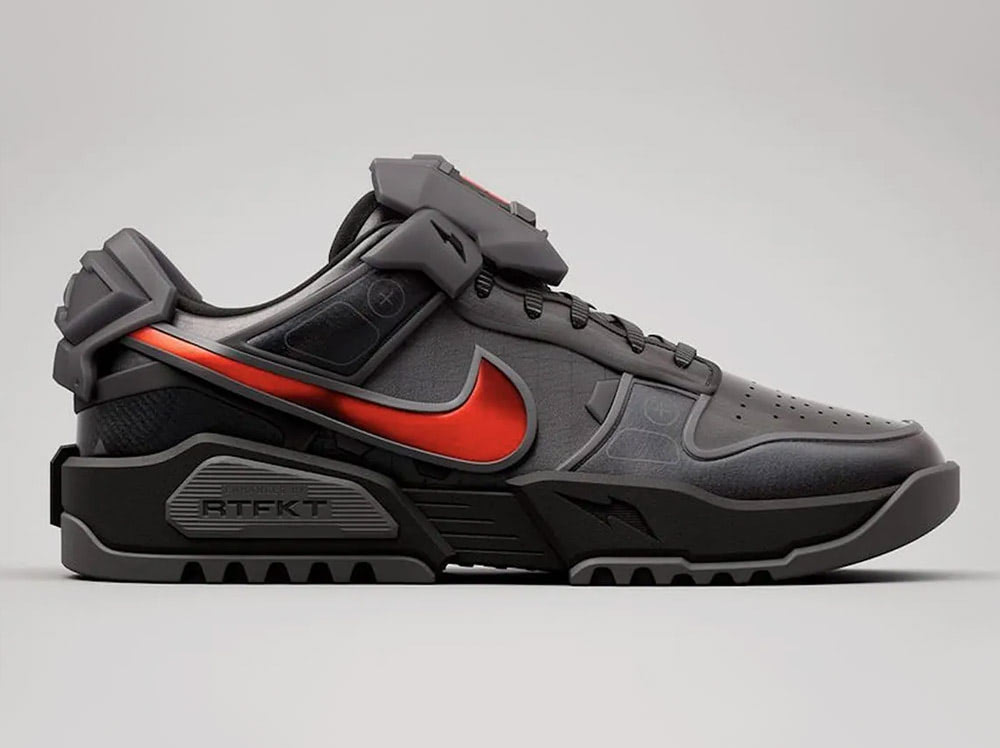 • RTFKT: A digital fashion platform that creates virtual and physical sneakers, clothing and accessories. Founded in January 2020 by Benoit Pagotto, Chris Le and Steven Vasilev, who combined their skills and interests in retail, marketing, design and gaming. The label quickly gained popularity and recognition for its innovative and creative products, such as the Cryptokicks, the first native Web3 sneaker featuring auto-lacing, enhanced lighting, haptic feedback, gesture control and more. In December 2021, Nike acquired RTFKT for an undisclosed sum, marking a significant move for the sportswear giant into the metaverse and Web3 space.
• RTFKT: A digital fashion platform that creates virtual and physical sneakers, clothing and accessories. Founded in January 2020 by Benoit Pagotto, Chris Le and Steven Vasilev, who combined their skills and interests in retail, marketing, design and gaming. The label quickly gained popularity and recognition for its innovative and creative products, such as the Cryptokicks, the first native Web3 sneaker featuring auto-lacing, enhanced lighting, haptic feedback, gesture control and more. In December 2021, Nike acquired RTFKT for an undisclosed sum, marking a significant move for the sportswear giant into the metaverse and Web3 space. • DressX: A digital fashion platform that allows users to try on and buy digital fashion items from various designers and brands. DressX also offers a service that transforms physical garments into digital ones, and a tool that enables users to create their own digital fashion designs.
• Auroboros: A digital fashion house that creates bespoke and ready-to-wear garments that are inspired by nature, science and technology. Auroboros also hosts events and shows in the metaverse, such as the Metaverse Fashion Week, where they collaborated with architecture studio Voxel Architects to create a rocket-shaped virtual building.
• The Fabricant: A digital fashion house that creates hyper-realistic 3D garments that can be worn by avatars or projected onto physical bodies. The Fabricant also sells digital fashion NFTs, such as the Iridescence dress, which was auctioned for $9,500 in 2019.
Enter the wearables
Digital art and NFTs are meaningless and worthless without a physical device or media where you can store and display them. This new breed of collectors and investors enjoy showing their property, which often comes in form of expensive art signed by famous designers such as Beeple, Damien Hirst or Bored Ape Yacht Club.
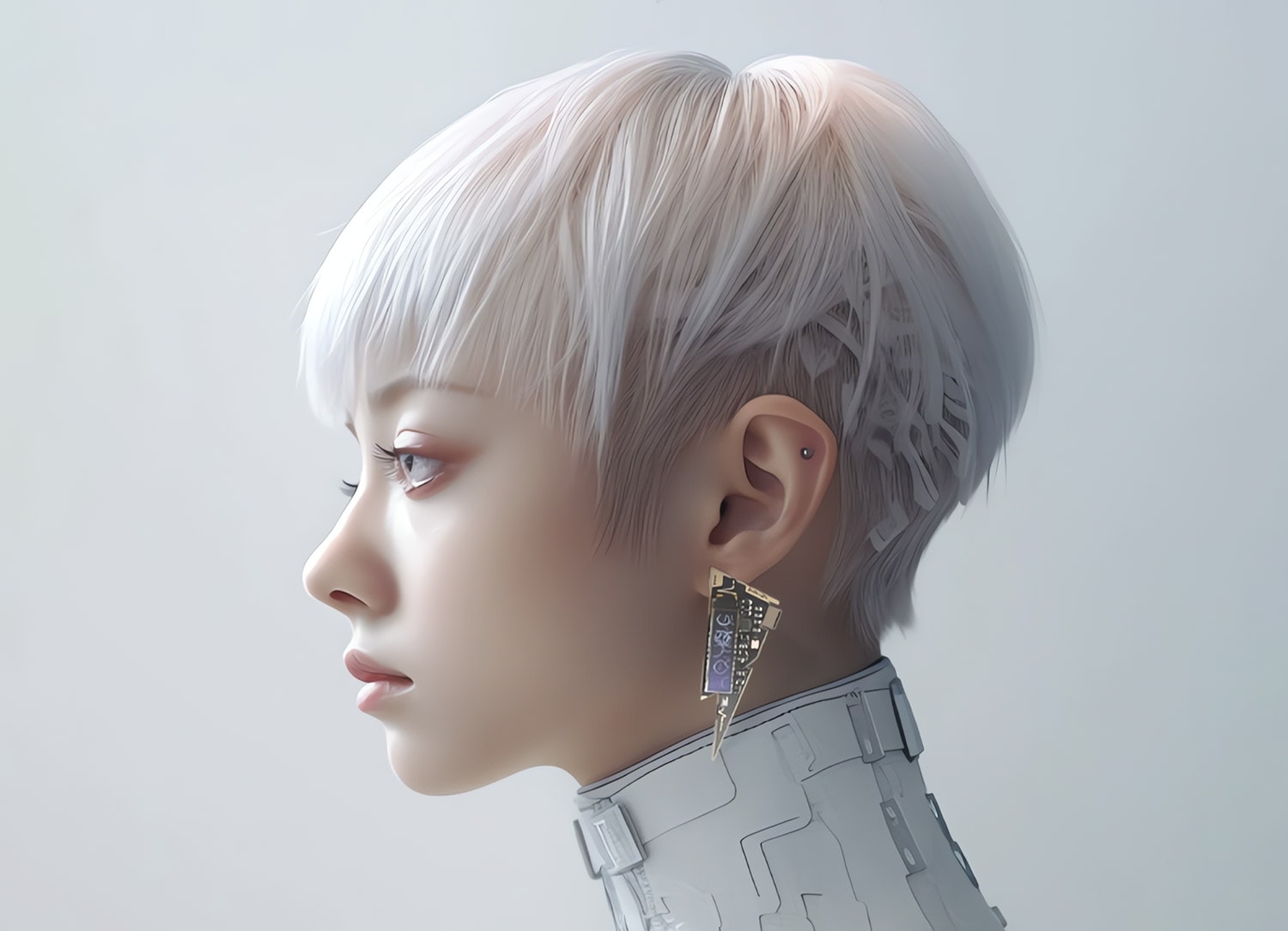
Cyberpunk LCD Earring While some enjoy their art hung on a wall, many others prefer to wear them while they jet set from place to places like Dubai, Miami and Hong Kong - And that's where the concept of "wearables" comes into place.
Wearables are physical devices that can be worn on or attached to the body, such as smartwatches, fitness trackers, headphones, glasses, jewelry and even clothing.
Wearables can provide various functions, such as measuring health and fitness data, enhancing sensory perception, delivering information and entertainment, and facilitating communication and interaction. Wearables can also be integrated with digital fashion, creating a hybrid of physical and digital expression.
Perfect examples of innovative wearables that fuse fashion, jewelry design, and technology are:
• Posthuman Lab: With emerging technologies like machine learning coupled up with 3D printing, Posthuman Lab brings sci-fi fashion into physical realms by exploring new landscapes through an innovative (zero-waste) production process while augmenting human fashion.
• Cap_able: A collection of knitted clothing that protects the wearer's biometric data from facial recognition software. The clothing uses a combination of patterns, colors and textures that disrupt the algorithms of the software, without the need to cover the face.
• Chain Guardians: A blockchain gaming ecosystem that creates phygital (physical and digital) garments that are linked to NFTs. The garments include NFC chips that can be scanned to access the NFTs, which can be worn by avatars in the Chain Guardians metaverse.
• MOCHI: A designer of futuristic and cyberpunk-inspired jewelry including LED Necklaces, robotics keychains and art wearables made with electronic components, led lights and translucent materials.
• NeuroSpeculative AfroFeminism: A project that explores the intersection of neuroscience, art and technology from the perspective of black women. The project includes a series of wearable devices, such as the Octavia Electrodes, which are designed to stimulate brain activity and enhance cognitive abilities.
Bionic Bodies
Wearables have also evolved. Art pieces that used to cover only the ears, eyes and fingers, have now expanded to larger body parts such as the whole arms. Today, it's possible to decorate your whole arm with a full futuristic armor with dynamic LED lights that can be controlled via mobile app, voice or music.
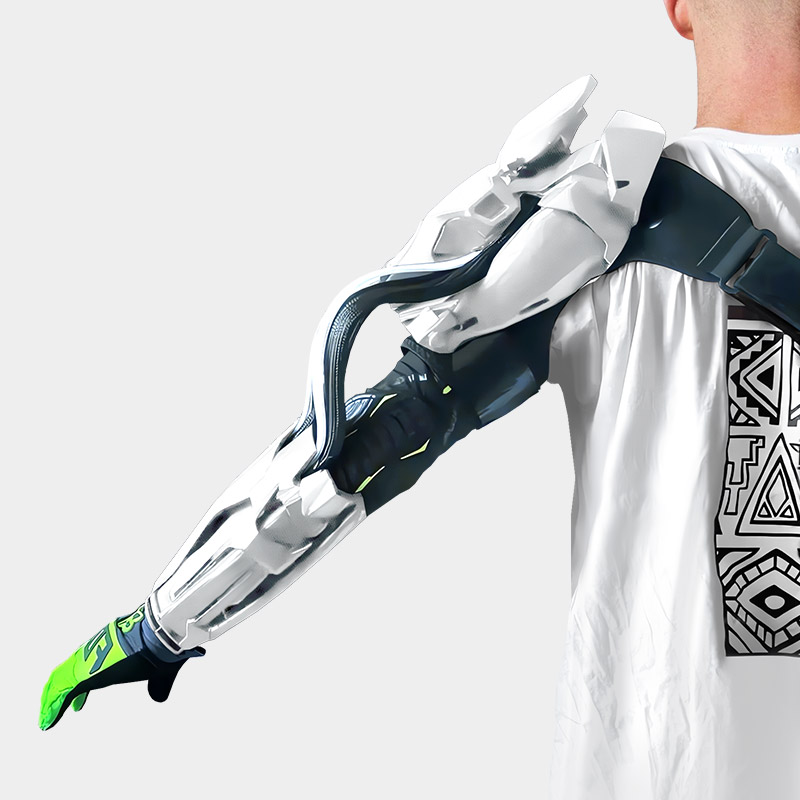
Cyberpunk Bionic Arm Take the Cyberpunk Arm for example - a high-end wearable armor that transforms your full arm into a bionic skin with a moving light animation.
This futuristic wearable features a beautiful arrangement of LED-powered light details that animate in a smooth flow-like movement, and it's available for your left or right arm.
The armor is fully flexible and articulated, which allows you to move naturally, dance, ride motorbikes or even perform martial arts.
The LED decoration is connected via Bluetooth to your phone, which can be configured using the mobile app. The light effects can be chosen and controlled manually, but the app also allows you to connect the arm to a microphone or music player, allowing you to animate the LED lights based on music or sounds in real-time, which makes it the ultimate augmented body wearable for singers, artists, DJs or dancers.
Conclusion: fashion, wearables and digital art are three domains that are reshaping the way we express ourselves, communicate and consume in the metaverse. These domains are not mutually exclusive, but rather complementary and interrelated, creating a rich and diverse landscape of creativity and innovation.
The metaverse offers new opportunities and challenges for artists, designers, consumers and collectors, as well as new ethical and social implications for the future of art and culture.
If you're into web3 fashion, non-fungible tokens and digital art, you will love the NFT Backpacks, Wearable Art and LCD Necklaces available for sale at Hypebrother.
You May Also Like
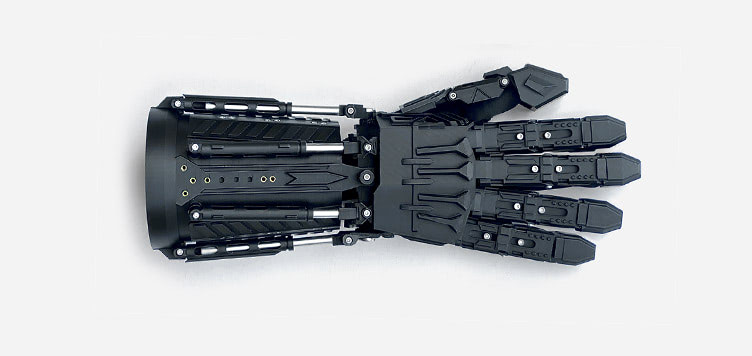 |
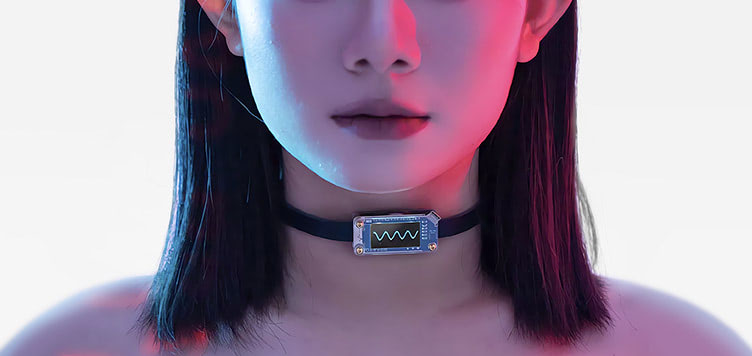 |
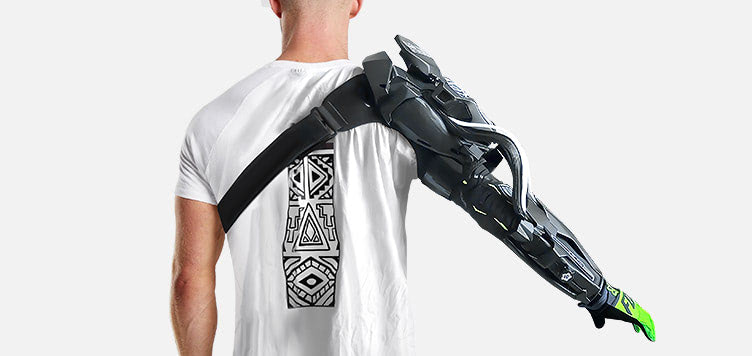 |
If you're a brand, label or designer looking to promote your business, get in touch with us to launch or sell your original products and discuss product placement or campaigns.
